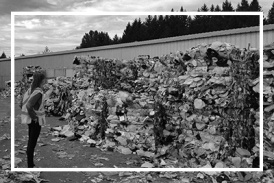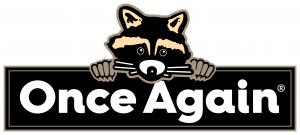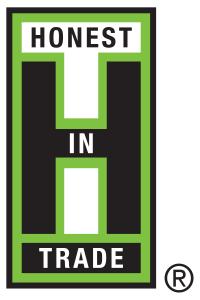Earth Day News: Once Again Spreads Integrity with Small-Batch Products
SedEx and HowGood Partnerships Provide Customers Increased Transparency
• People: Everyone in Once Again’s supply chain is treated fairly—from employees who are considered family, to the local community who sees the brand as a trusted partner, to farm workers who receive above fair-trade market prices through direct negotiations. The company also supports nonprofit organizations locally, nationally, and abroad.
• Products: Once Again was the first peanut butter company in the world to get SQF certified. In addition to undergoing constant external audits, a robust quality assurance program and state-of-the-art laboratories oversee internal practices, food safety and food quality. The team also uses an internal database to monitor suppliers and develop a score card for each, ensuring social integrity is maintained throughout the supply chain.
• Planet: Once Again has a Green Team that evaluates its environmental impact and provides solutions to support the planet. For example, the company makes containers from partially recycled glass, purchases solar and wind turbine credits to offset its electrical use, has an internal recycling program, and donates its food waste to local animal lovers and farms who feed its products to their pets, livestock, and wildlife.
To offer added visibility into the program, Once Again recently partnered with SedEx and HowGood to provide full traceability into its supplier relationships, plus obtain the carbon footprint for every item brought to market.
Said Gael Orr, Once Again’s marketing director, “Since the early days, when our founders adopted a family of racoons found on the factory grounds in rural upstate New York, Once Again has been dedicated to good stewardship and taking care of the earth. We truly are proud to produce products in the most ethical way possible, while always looking for opportunities to make a positive impact on the planet and people around us.”
This Earth Day, April 22nd, visit OnceAgain.com to learn more and follow @OnceAgainNutButter on social media.
Shaina Ostroff
Reach PR
+1 310-490-7541
shaina@reach-pr.com
Visit us on social media:
Facebook
X
LinkedIn
Instagram
TikTok
Legal Disclaimer:
EIN Presswire provides this news content "as is" without warranty of any kind. We do not accept any responsibility or liability for the accuracy, content, images, videos, licenses, completeness, legality, or reliability of the information contained in this article. If you have any complaints or copyright issues related to this article, kindly contact the author above.
ALEJANDRO ROJAS SELECTED AS TOP CORPORATE STRATEGIST OF THE YEAR BY IAOTP
Equipment as a Service Market Value to Surpass $1.12B By 2032, Says DataM Intelligence
Cloud ERP Market Boom To $176.93B By 2032 | Says DataM Intelligence - Get the Insights
Kalendarium
Więcej ważnych informacji
 Jedynka Newserii
Jedynka Newserii

 Jedynka Newserii
Jedynka Newserii

Handel

Ze względu na różnice w cenach surowce wtórne przegrywają z pierwotnymi. To powoduje problemy branży recyklingowej
Rozporządzenie PPWR stawia ambitne cele w zakresie wykorzystania recyklatów w poszczególnych rodzajach opakowań. To będzie oznaczało wzrost popytu na materiały wtórne pochodzące z recyklingu. Obecnie problemy branży recyklingu mogą spowodować, że popyt będzie zaspokajany głównie przez import. Dziś do dobrowolnego wykorzystania recyklatów nie zachęcają przede wszystkim ceny – surowiec pierwotny można kupić taniej niż ten z recyklingu.
Przemysł spożywczy
Rośnie presja konkurencyjna na unijne rolnictwo. Bez rekompensat sytuacja rolników może się pogarszać

Rolnictwo i żywność, w tym rybołówstwo, są sektorami strategicznymi dla UE. System rolno-spożywczy, oparty na jednolitym rynku europejskim, wytwarza ponad 900 mld euro wartości dodanej. Jego konkurencyjność stoi jednak przed wieloma wyzwaniami – to przede wszystkim eksport z Ukrainy i niedługo także z krajów Mercosur, a także presja związana z oczekiwaniami konsumentów i Zielonym Ładem. Bez rekompensat rolnikom może być trudno tym wyzwaniom sprostać.
Transport
Infrastruktury ładowania elektryków przybywa w szybkim tempie. Inwestorzy jednak napotykają szereg barier

Liczba punktów ładowania samochodów elektrycznych wynosi dziś ok. 10 tys., a tempo wzrostu wynosi ok. 50 proc. r/r. Dynamika ta przez wiele miesięcy była wyższa niż wyniki samego rynku samochodów elektrycznych, na które w poprzednim roku wpływało zawieszenie rządowych dopłat do zakupu elektryka. Pierwszy kwartał br. zamknął się 22-proc. wzrostem liczby rejestracji w ujęciu rocznym, ale kwiecień przyniósł już wyraźne odbicie – o 100 proc.
Partner serwisu
Szkolenia

Akademia Newserii
Akademia Newserii to projekt, w ramach którego najlepsi polscy dziennikarze biznesowi, giełdowi oraz lifestylowi, a także szkoleniowcy z wieloletnim doświadczeniem dzielą się swoją wiedzą nt. pracy z mediami.











.gif)

 |
| |
| |
|